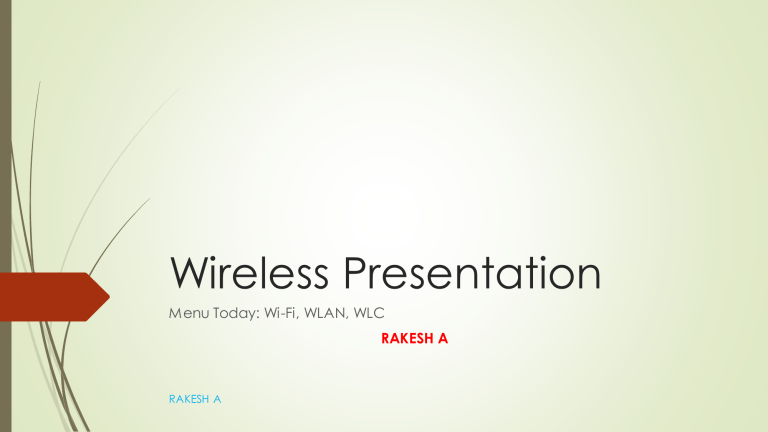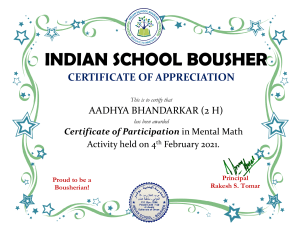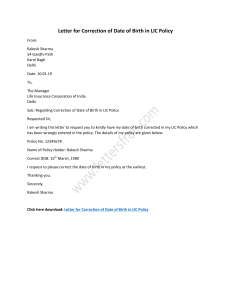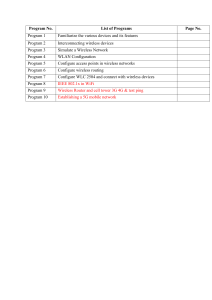
Wireless Presentation Menu Today: Wi-Fi, WLAN, WLC RAKESH A RAKESH A What is Wireless Network A Wireless local area network(WLAN) uses radio waves to connect devices, such as laptops, iPads, Mobiles to the internet and to your corporate network and applications. Components used to setup Wireless 1. Wireless Controller (Physical or VM based or Cloud Based or Embedded) 2. Access Point (Light Weight) 3. Switch PoE 4. DHCP Server 5. Wireless Security via WPA/WPA2 or AAA Servers (ACS, Cisco ISE, Forescout, Clearpass etc.,) Access Points Types 1. Light Weight Access Points 2. Autonomous Access Points RAKESH A Wireless Deployment Models RAKESH A Autonomous Deployment RAKESH A Centralized Deployment In this scenarios the Flex Connect deployment can takes places with the branch RAKESH A offices. Embedded Deployment RAKESH A Distributed Deployment RAKESH A Cloud Deployment RAKESH A Most Commonly used Deployment RAKESH A WLC & AP Communication WLC validates the AP and then CAPWAP join response to the AP. The AP validates the WLC to complete the discovery & join process. RAKESH A CAPWAP- Control and Provisioning of Wireless Access Point Protocols I. MTU size is 1500 Bytes. II. UDP – Protocol 17 Port – 5246 ( Must be opened between AP+WLC) & 5247 for CAPWAP Data channel. III. Control + DATA Tunnels ( DTLS based secure encryption and Authentication) IV.CAPWAP control messages—Used to convey control, configuration, and management information between the WLC and APs. 802.11 standards I. 2.4 Ghz, 5 Ghz- They all are ISM bands. 802.11b- supports up to 11Mbps.802.11a/g supports speeds of 6, 9, 18, 24, 36, 48 and 54 Mbps. i.e. for ideal cases where data rates are 54 Mbps. i.e. 27 Mbps full duplex. 20Client/WLAN = 27/20 = 1.35 Mbps in 1sec/20 = 50ms of airtime (timeslot). II. 802.11n is evolved to support more data rates by multiplexing 2 20 Mhz channel III. 802.11ac is evolved to address limitation of 802.11n. Can multiplex 8 20 Mhz channels IV.802.11ax(Wi-Fi6) RAKESH A Cisco Wireless AP Modes 1. Local – This is the default mode and helps the clients to connect centrally. 2. Monitor – AP in monitor mode doesn’t transmit and it won’t broadcast the SSID so clients are unable to connect to the AP 3. Flex Connect – FlexConnect is an AP mode for situations like the AP can locally switch traffic between a VLAN & SSID 4. Sniffer – AP in Sniffer mode won’t broadcast an SSID and clients cant connect to the AP 5. Rouge Detector – Rouge detector mode makes the AP detect rouge devices full-time, the AP checks for MAC addresses it sees in the air. 6. Bridge – The AP becomes a dedicated point to Point or point to multipoint bridge. RAKESH A WLC Mobility Group A Mobility group is a set of controllers that are configured with the same mobility group name or domain name With the help of mobility group, we are allowing the controller to share the information dynamically and forward the data traffic whenever intercontroller or intra-controller roaming occurs. RAKESH A Anchor WLC The Cisco Unified WLAN solution offers a flexible, easy-to-implement method for deploying wireless guest access by using Ethernet in IP (RFC3378) within the centralized architecture. Ethernet in IP is used to create a tunnel across a Layer 3 topology between two WLC endpoints. The benefit of this approach is that there are no additional protocols or segmentation techniques that must be implemented to isolate guest traffic from the enterprise. See the topology for an example of guest access topology using a centralized WLAN architecture. RAKESH A Overall Wireless Terminologies & Features Wireless Security (WPA or 802.1X or MAB) WEB Auth for Guest Access Anchor Controller LWAP & CAPWAP RAKESH A Wireless Heatmaps Heatmaps are a powerful way to understand it is a graphical representation of data where values are depicted by color. There are many tools to generate the heatmap of your wireless network. Examples: Ekahau, Solarwinds etc,. RAKESH A Thank You RAKESH A




